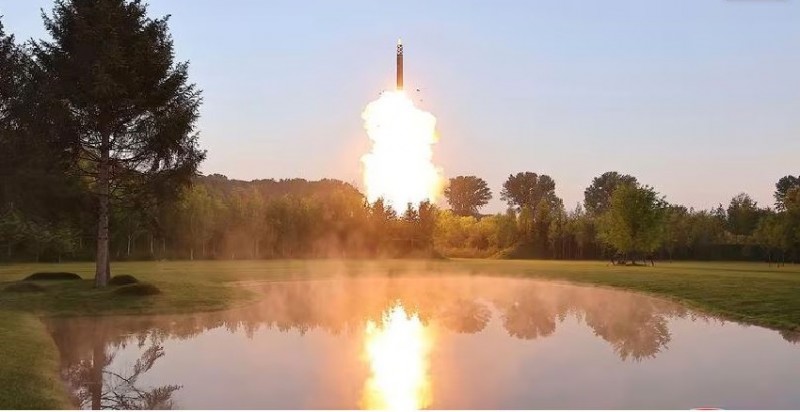
North Korea announced on Thursday that it had successfully tested a new multiwarhead missile. This marks the first known launch of a developmental weapon that leader Kim Jong Un has long desired to overwhelm US and South Korean missile defenses. However, South Korea quickly dismissed the claim, suggesting it was a cover-up for a failed launch.
According to North Korea's state media, the test conducted on Wednesday evaluated the separation and guidance control of individual mobile warheads to ensure the capability of Multiple Independent Reentry Vehicles (MIRVs). The media reported that the warheads "were guided correctly to the three coordinate targets" and that a decoy separating from the missile was verified by radar.
If these claims are accurate, it would be North Korea's first public demonstration of developing a multiwarhead missile, though still at an early stage.
On Thursday, South Korea's military countered these claims, with a joint analysis by South Korean and US authorities concluding that the North Korean missile launch was a failure. Joint Chiefs of Staff spokesperson Lee Sung Joon explained that while MIRV tests involve the separation of warheads in descending stages, the North Korean missile exploded in the initial stage of its flight.
Lee also pointed out that North Korean photos of the launch showed a weapon similar to a liquid-fuel Hwasong-17 ICBM, which had previously been test-fired in March 2023. The South Korean military's earlier assessment on Wednesday had identified the missile as a suspected solid-fuel hypersonic missile that exploded off North Korea's east coast, scattering fragments in the water. The detection of more smoke than usual suggested a possible engine fault causing combustion issues.
Kim Jong Un had listed a multiwarhead missile among his desired high-tech weapons systems during a ruling party meeting in early 2021. His wish list also included spy satellites, solid-fuel intercontinental ballistic missiles, hypersonic weapons, and submarine-launched nuclear missiles. Since then, North Korea has conducted several tests to develop these weapons systems.
Ankit Panda, a senior analyst at the Carnegie Endowment for International Peace, remarked, "I had been anticipating a MIRV test for some time now, as this was one of the last remaining items on Kim Jong Un's modernization wish list from the 8th Party Congress back in January 2021." Panda suggested that Wednesday's test seemed to be an initial evaluation of some key subsystems required to develop a workable MIRV, with successive tests expected to follow.
Lee Choon Geun, an honorary research fellow at South Korea's Science and Technology Policy Institute, indicated that North Korea appears to be testing individual technological elements of multiwarhead missiles. He predicted more tests would be conducted to perfect the separation and guidance control, as well as other facets of multiwarhead missile technology.
Chang Young-keun, a missile expert at Seoul's Korea Research Institute for National Strategy, noted that the North Korean test has yet to prove it has sufficient MIRV controlling technologies necessary for ICBMs. He added that North Korea did not provide enough information to verify whether its MIRVs made successful atmospheric reentries and hit designated targets.
North Korea Fires Possible Hypersonic Missile, South Korea Reports
Russia and North Korea to Restart Direct Train Service After Four Years
South Korea and US Condemn New Russia-North Korea Treaty as Threat to Regional Stabilit